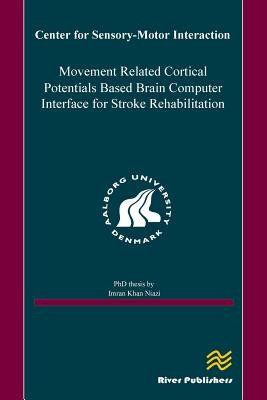
- We will send in 10–14 business days.
- Author: Imran Khan Niazi
- Publisher: River Publishers
- Year: 2012
- Pages: 36
- ISBN-10: 879298245X
- ISBN-13: 9788792982452
- Format: 15.6 x 23.4 x 0.2 cm, softcover
- Language: English
- SAVE -10% with code: EXTRA
Movement Related Cortical Potentials Based Brain Computer Interface for Stroke Rehabilitation (e-book) (used book) | bookbook.eu
Reviews
Description
A brain-computer interface (BCI) is a system that interprets brain signals generated by the user, allowing specific commands from the brain to be sent to an external device. Such interface enables severely disabled people to interact with their environment without the need for any activation of their normal pathways involved in motor commands. The combination of rehabilitation paradigms and BCIs, both of which exploit cortical plasticity, could help people become "able" once again. For this reason, BCI systems appear promising rehabilitation tools. The aim of this PhD thesis is to study how a BCI system can be used for stroke rehabilitation when it is based on neuromodulation techniques using Hebbian plasticity and movement related cortical potentials (MRCP) with an optimum number of EEG electrodes. Four studies were conducted to achieve this goal: In STUDY I the novel protocol developed in Mrachacz-Kersting et al. 2012 had showed improvement in some relevant clinical measures used to access functionality of motor tasks in stroke population, when applied three times in a week as a training paradigm. These encouraging results from our first study alongside the Mrachacz-Kersting et al. 2012 study served as the basis for development of a self-paced BCI system for induction of plasticity. In STUDY II (pseudo online) detector for self-paced BCI system, based on movement intention detection from initial negative phase of MRCP, was proposed and tested in healthy volunteers and then in STUDY III real online selfpaced BCI system for induction of plasticity was implemented and tested. In STUDY IV a subject independent detector (based on STUDY II) was developed and compared with individualized detector. The results were promising as difference between performances of two approaches was not significantly different.
EXTRA 10 % discount with code: EXTRA
The promotion ends in 20d.21:46:22
The discount code is valid when purchasing from 10 €. Discounts do not stack.
- Author: Imran Khan Niazi
- Publisher: River Publishers
- Year: 2012
- Pages: 36
- ISBN-10: 879298245X
- ISBN-13: 9788792982452
- Format: 15.6 x 23.4 x 0.2 cm, softcover
- Language: English English
A brain-computer interface (BCI) is a system that interprets brain signals generated by the user, allowing specific commands from the brain to be sent to an external device. Such interface enables severely disabled people to interact with their environment without the need for any activation of their normal pathways involved in motor commands. The combination of rehabilitation paradigms and BCIs, both of which exploit cortical plasticity, could help people become "able" once again. For this reason, BCI systems appear promising rehabilitation tools. The aim of this PhD thesis is to study how a BCI system can be used for stroke rehabilitation when it is based on neuromodulation techniques using Hebbian plasticity and movement related cortical potentials (MRCP) with an optimum number of EEG electrodes. Four studies were conducted to achieve this goal: In STUDY I the novel protocol developed in Mrachacz-Kersting et al. 2012 had showed improvement in some relevant clinical measures used to access functionality of motor tasks in stroke population, when applied three times in a week as a training paradigm. These encouraging results from our first study alongside the Mrachacz-Kersting et al. 2012 study served as the basis for development of a self-paced BCI system for induction of plasticity. In STUDY II (pseudo online) detector for self-paced BCI system, based on movement intention detection from initial negative phase of MRCP, was proposed and tested in healthy volunteers and then in STUDY III real online selfpaced BCI system for induction of plasticity was implemented and tested. In STUDY IV a subject independent detector (based on STUDY II) was developed and compared with individualized detector. The results were promising as difference between performances of two approaches was not significantly different.


Reviews